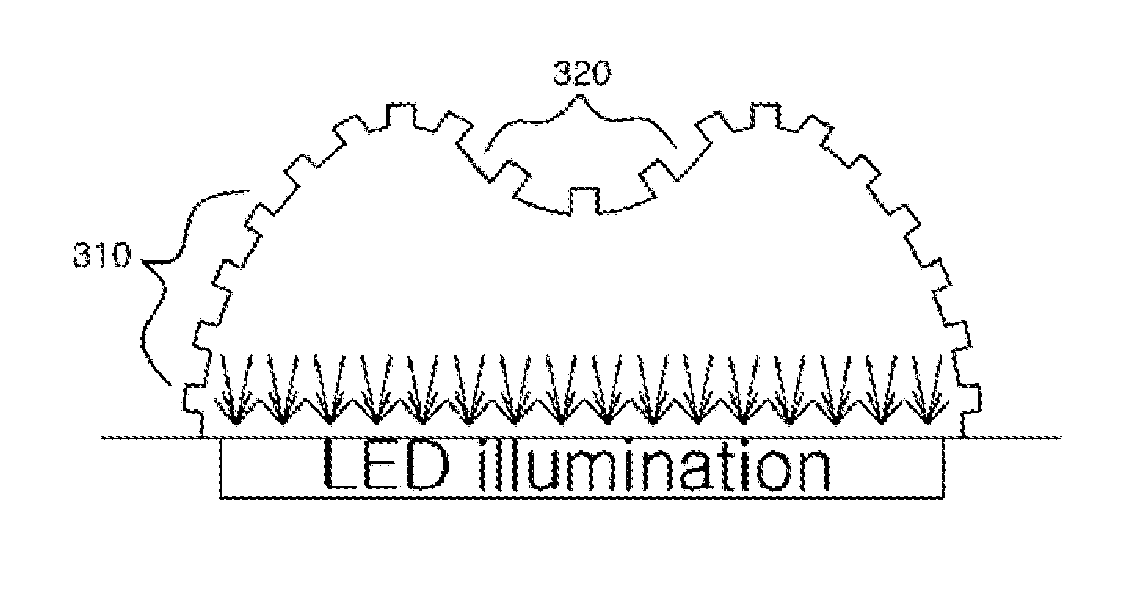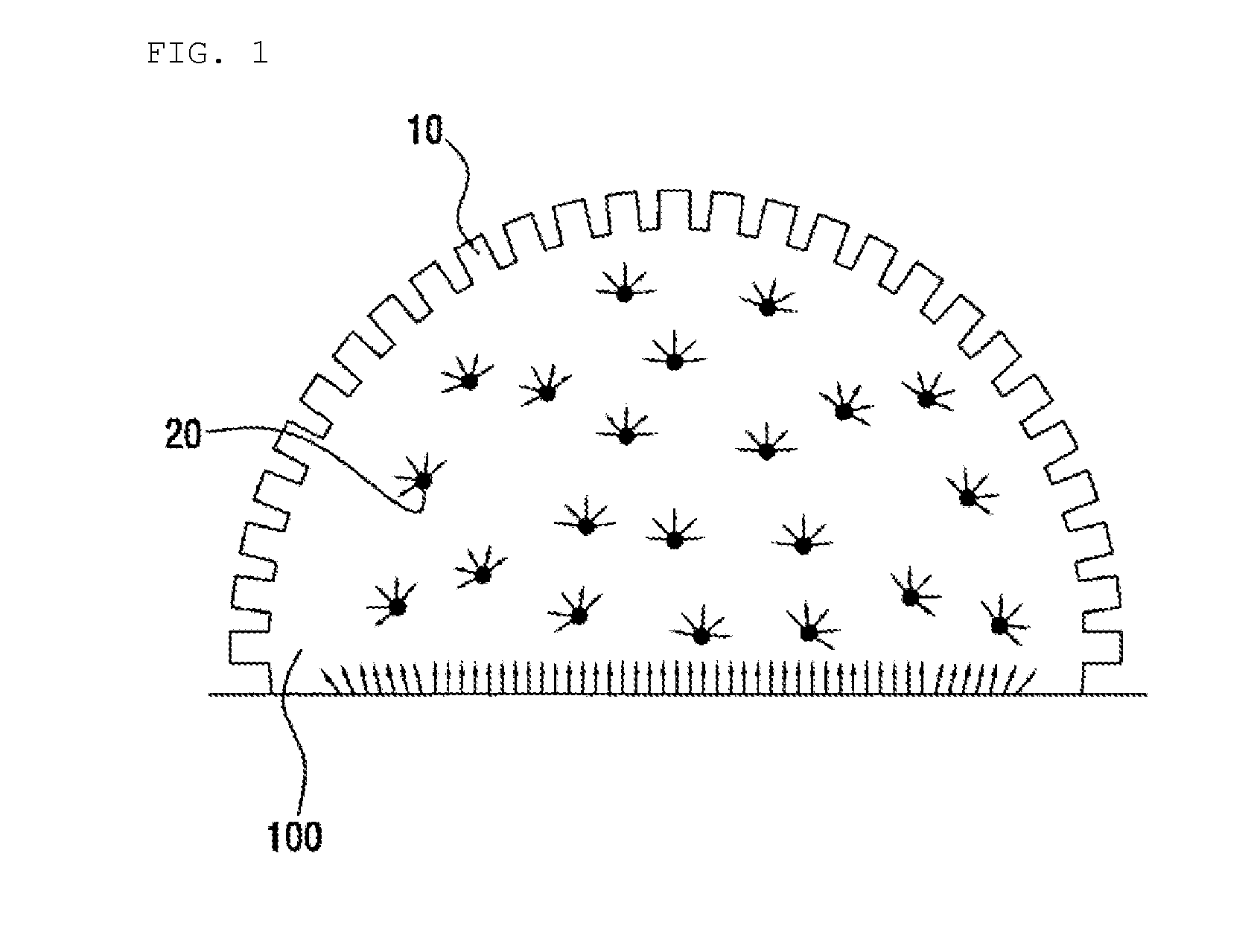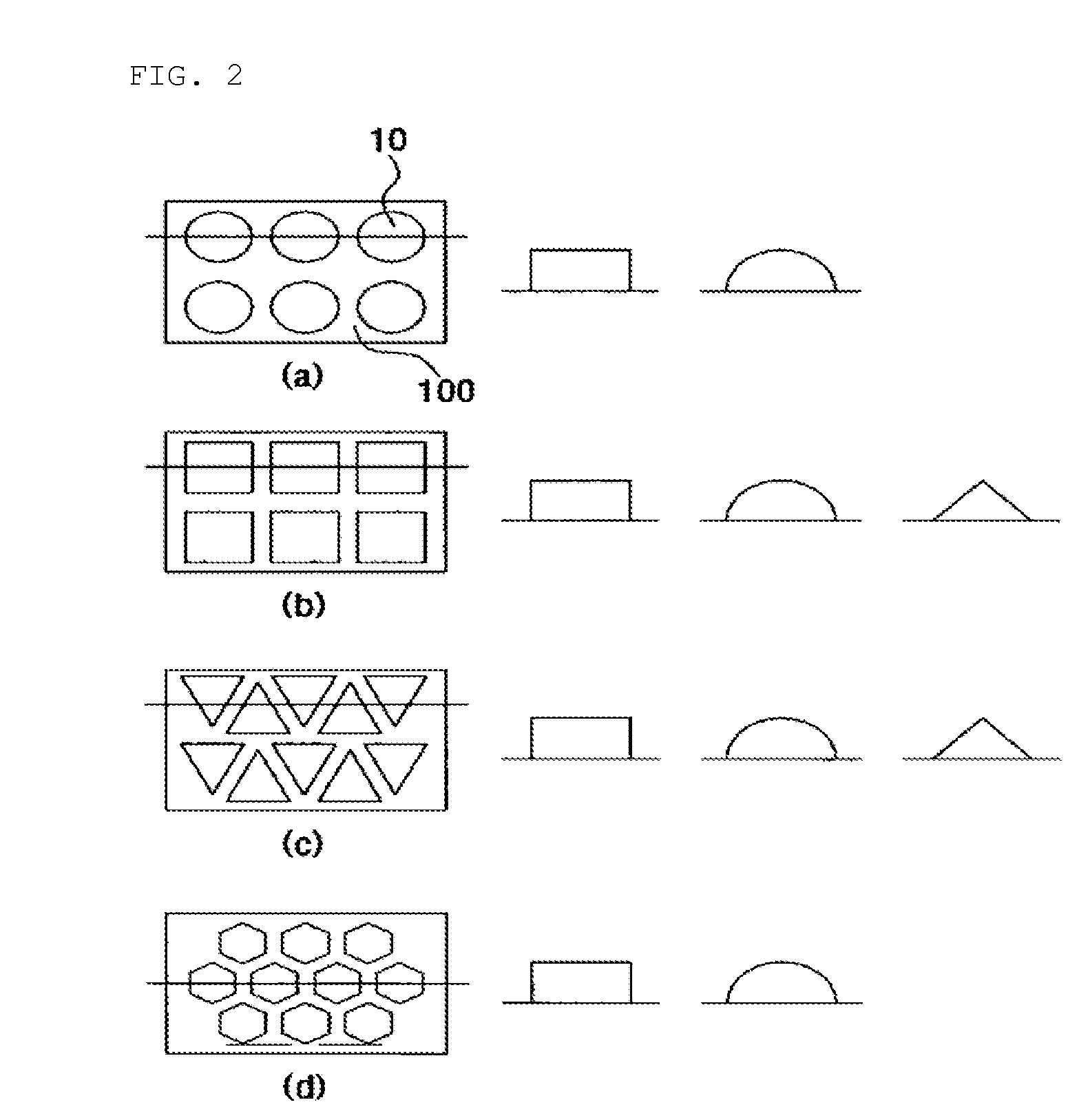Micro-composite pattern lens, and method for manufacturing same
- Summary
- Abstract
- Description
- Claims
- Application Information
AI Technical Summary
Benefits of technology
Problems solved by technology
Method used
Image
Examples
production example
[0101]FIG. 16 is a process diagram illustrating a method of manufacturing the micro-composite pattern lens having double curvature structure according to one embodiment of the present invention.
[0102]Referring to (a) of FIG. 16, a photo-resist was stacked on a substrate and then patterned to make the micro pattern array 2. According to one embodiment of the present invention, the silicone substrate of 4 inches was washed and then water remaining over it was evaporated at a temperature of 120° C. for 30 seconds. As a result, chemical residue and organic contaminants were moved. Further, a bonding force between the photo-resist and the silicone substrate is improved due to HMDS treatment. Then, AZ1512 (AZ Electronic Materials) which is a positive photo-resist was applied to the silicone substrate and then spin-coated at 1500 rmp for 3 seconds and 450 rmp for 30 seconds, which results that the photo-resist layer of 1.2 μm is stacked on the silicone substrate. Subsequently, the positive...
experimental example
[0113]A relationship between the curvature structure of the lens and the angle of light emission was analyzed via this experimental example. The angle of the emission light of the micro-composite pattern lens having double curvature structure was measured and analyzed using optical power meter. The LED light source was used as a reference example, and micro-composite pattern lens of concave lens and convex lens having a single curvature structure was used as comparison example.
[0114]FIG. 18 is a graph measuring an angle of light emission of the LED light source.
[0115]Referring to FIG. 18, it will be appreciated that the micro-composite pattern lens having double curvature structure according to the present invention has a wider angle of light emission than the micro-composite pattern lens having single curvature structure.
[0116]The experiment result represents that the angle of light emission depends on the curvature structure of the lens and particularly the double structure is adv...
PUM
| Property | Measurement | Unit |
|---|---|---|
| Angle | aaaaa | aaaaa |
| Angle | aaaaa | aaaaa |
| Thickness | aaaaa | aaaaa |
Abstract
Description
Claims
Application Information
 Login to View More
Login to View More - R&D
- Intellectual Property
- Life Sciences
- Materials
- Tech Scout
- Unparalleled Data Quality
- Higher Quality Content
- 60% Fewer Hallucinations
Browse by: Latest US Patents, China's latest patents, Technical Efficacy Thesaurus, Application Domain, Technology Topic, Popular Technical Reports.
© 2025 PatSnap. All rights reserved.Legal|Privacy policy|Modern Slavery Act Transparency Statement|Sitemap|About US| Contact US: help@patsnap.com



